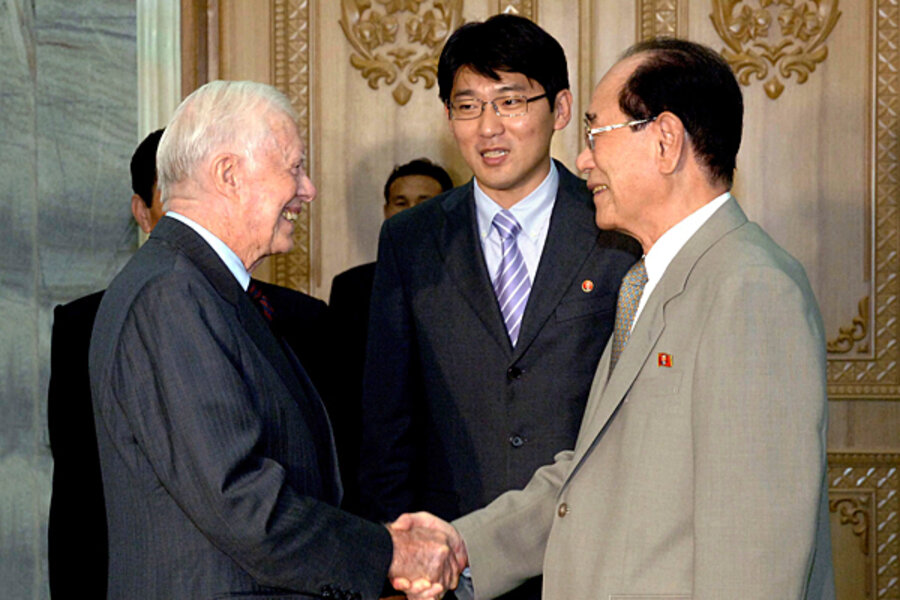Jimmy Carter's North Korea trip: quiet, matter-of-fact diplomacy
Loading...
| Seoul, South Korea
The first time Jimmy Carter and wife, Rosalynn, went to Pyongyang, they did so by road, entering North Korea at the truce village of Panmunjom in June 1994.
That’s the fastest way to Pyongyang, four or five hours from Seoul if traffic ever moved normally, but the crossing at Panmunjom has been closed to normal traffic ever since the Korean War truce was signed in July 1953. Soldiers on either side stare at one another across the line where the shooting stopped.
Mr. Carter’s mission then was to defuse “the first nuclear crisis.” South Korea’s then-president, Kim Young-sam, had told then US President Bill Clinton that he did not want to risk a war in which millions would die. Kim Dae-jung, who had run for president three times and was gearing up for his successful run in 1997, appealed to Carter to intervene.
In a leisurely boat ride on the Daedong River in Pyongyang as the guest of North Korea’s "Great Leader" Kim Il-sung, Carter on June 17, 1994, won the promise of a freeze of the North’s nuclear program in exchange for twin light-water nuclear reactors.
I saw Carter before he left and again after he got back at the US ambassador’s residence. He spoke quietly, even matter-of-factly, as the few American correspondents in Seoul gathered in a semi-circle around him.
“He agreed,” said Carter, as if all were settled, as if he and the fearsome North Korean, by chatting in friendly fashion, could resolve everything.
Carter had also laid the basis for a peace summit between Kim Il-sung and Kim Young-sam. Things didn't go as planned. Three weeks later, on the day talks were to begin, Kim Il-sung died. His son, Kim Jong-il, already in charge of the national defense commission, the center of power in the North, took over in an atmosphere of renewed tensions after Kim Young-sam refused to send a condolence message.
I mingled with leftist students throwing Molotov cocktails on the campus of Hanyang University. It was like old times when students had demonstrated against military-dominated regimes.
One afternoon that summer I watched with bemusement from a coffee shop as South Korean special forces rappelled down the broad front of the 23-story Daewoo building across a broad avenue from Seoul railway station. A CNN correspondent broadcast the exercise live, pointing at soldiers scaling spider-like down the walls. Great TV.
Incidents happen, rhetoric rises. Enter Jimmy Carter again. This time he goes to Pyongyang by plane to pick up a beleaguered American. While there, he’s talking. The cycle resumes. Nobody wants another Korean War.





